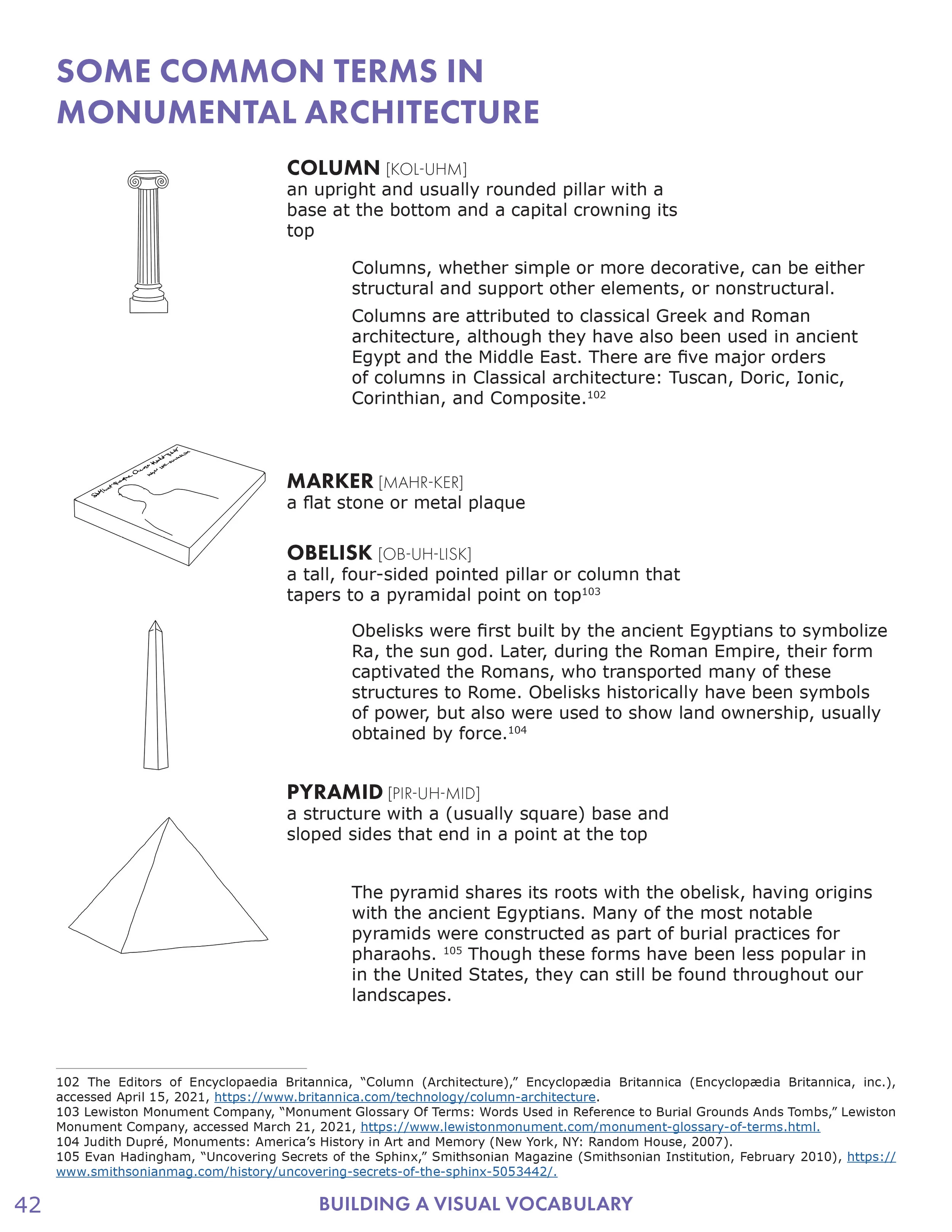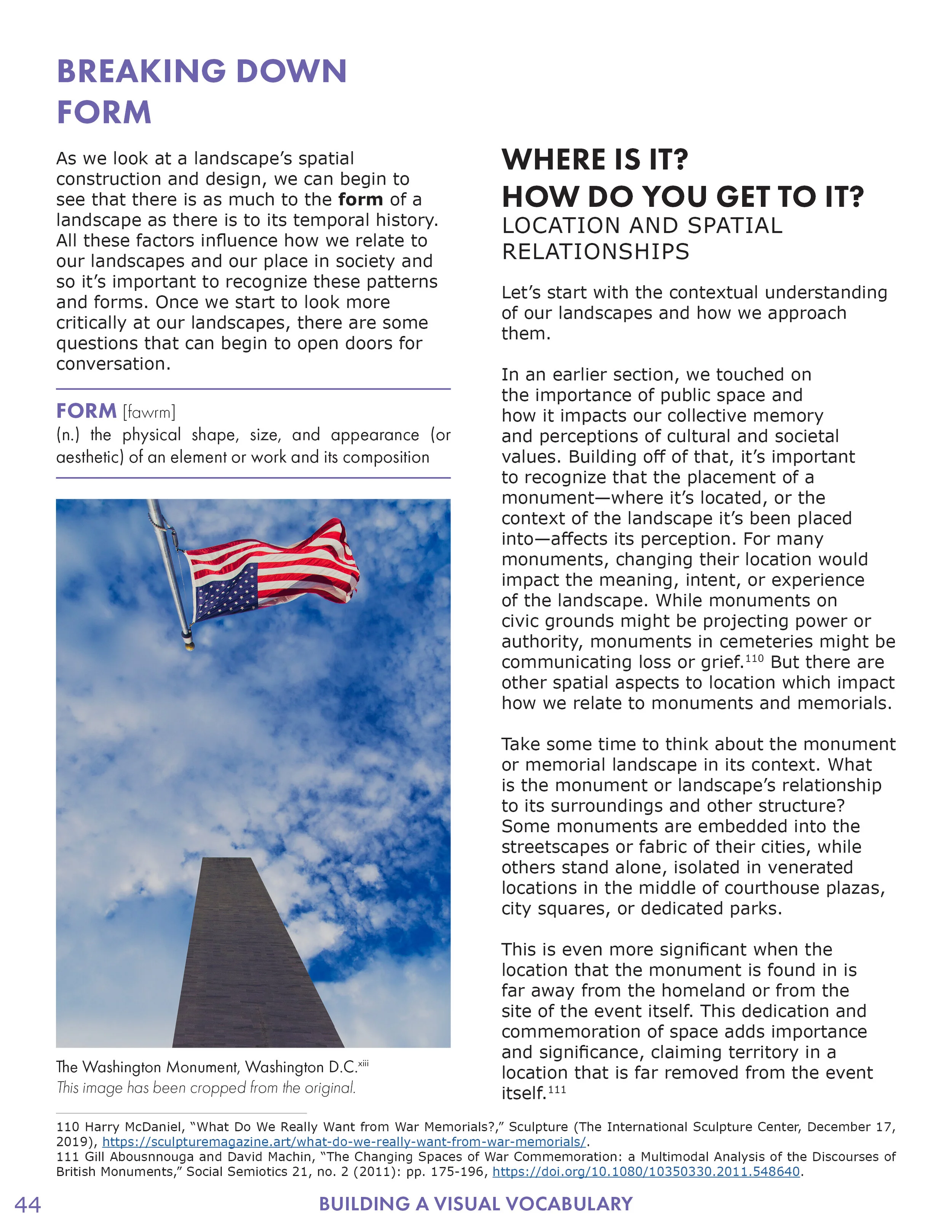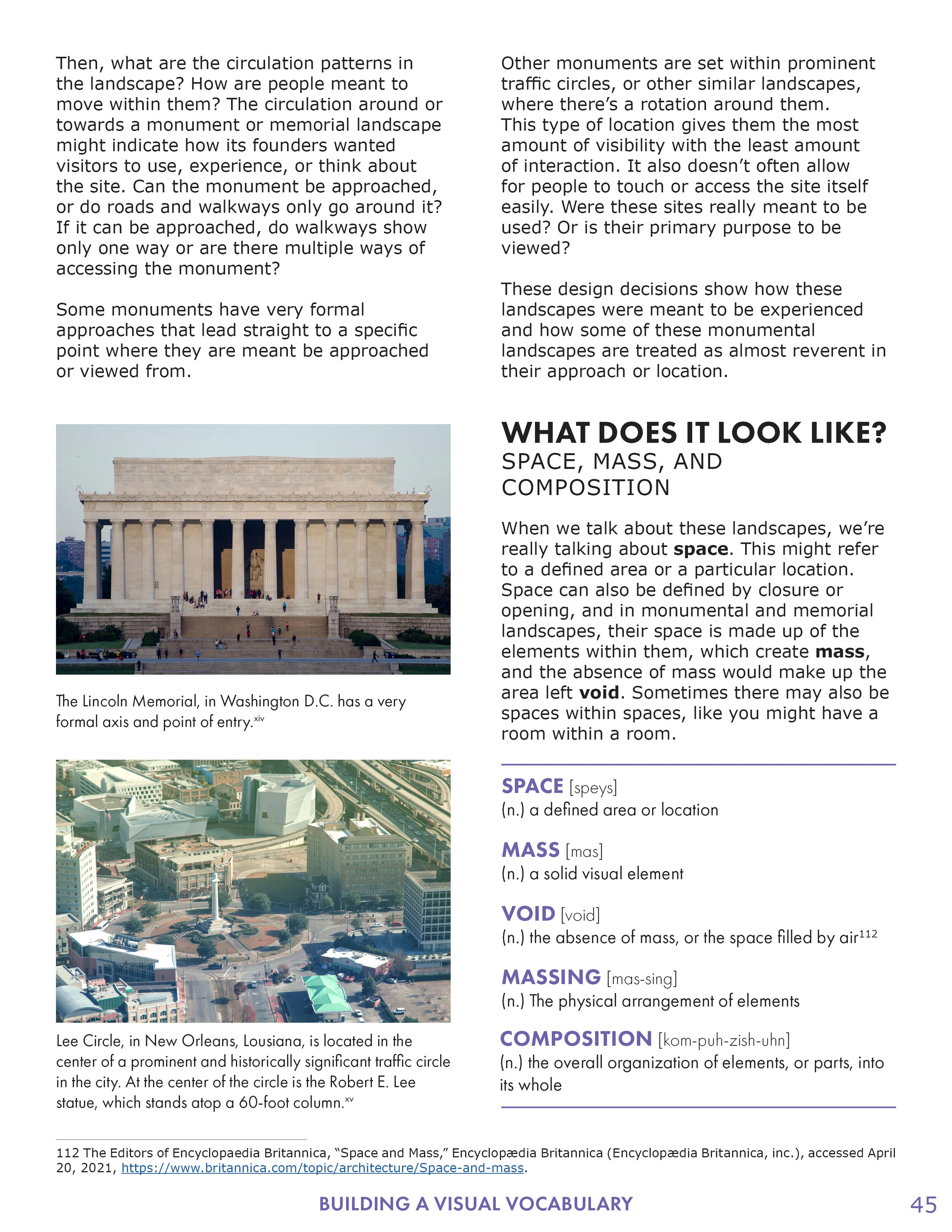
Monuments and the Politics of Memory
A Design-oriented Approach to Looking at Monumental and Memorial Landscapes
Every landscape has a story.
Our cultural landscapes are embodiments of our pasts, perspectives, and values. Like these histories, the subject of monumental and memorial landscapes is complicated and nuanced. There is no one perspective nor a correct “answer” to the conversations surrounding them and their place in our societies.
For my capstone, I developed a 117-page guide which introduced the history, context, design language, and questions surrounding these landscapes. By opening up opportunities for conversation, we can move forward in a way that is inclusive and sensitive to the needs and values of people today, while acknowledging our past and the histories that brought us here.
The handbook aims not to determine whether a particular monument or memorial is appropriate, but to provide a foundation for conversation—a bridge between designers and non-designers alike. While the readings offer an overview of the concepts relating to this discussion, remember that there is always more to explore about our cultural landscapes, and just as valuable as developing a contextual understanding, is taking the time to listen and learn from the stories we can tell each other.
Preview the Handbook
If there is anything to take away from this guide, it is that every landscape has a story to tell. In our public spaces, and our built landscapes especially, these stories are powerful. Because this power is often political, we must question these spaces and their embedded symbolism. Remember, our landscapes are both visible and invisible, but if we can see past the physical, we can expose the meanings and intentions beneath the surface.
Our landscapes are the backdrop and focus of protest, but they are also the fabric with which we can have a conversation and talk about the sensitive issues at hand. As such, our public spaces are our greatest opportunity for social justice and equity because they have the potential to impact so many people, across multiple demographics.
But our landscapes must be more than political— they must also be inclusive. As communities, we should be working towards landscapes that are more diverse and empathetic, which can better reflect the goals and values of our current societies. Through engaging in conversation, we can begin to answer some of these questions about our landscapes and evaluate their roles and impact in our communities. It’s time to ask questions, share your voice, and listen to the stories of others.



















